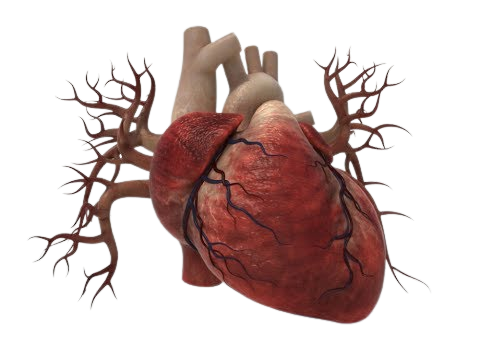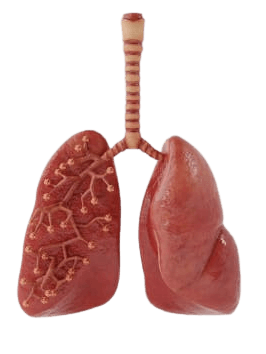Clinical Need
The ECM is constantly adapting and changing to allow cells to function properly and maintain balance within the body known as homeostasis. However, in chronic disorders, this process can become disrupted, leading to an excessive accumulation of ECM components called fibrosis. This thickening and scarring of tissue can cause chronic inflammation and ultimately lead to reduced oxygen and blood flow to the affected area.
The most critical clinical needs arise when this cycle of abnormal ECM remodeling drives disease progression in the heart, skin, joints and vital organs.


Cardiac Repair
Chronic heart failure is also a major global health concern, affecting millions of people and causing significant morbidity and mortality. Heart Failure (HF) is a medical condition in which the heart cannot pump enough blood to sustain adequate oxygen supply and body functions. It is caused by various conditions that damage the cardiac muscles and lead to abnormal ECM remodeling, which impairs heart functions and reduces blood flow, ultimately leading to heart failure. In the US alone, there are more than 6 million HF patients – nearly 1 million cases every year – and this number is expected to grow 2-3% annually. HF is the leading cause of hospitalizations in adults over 65 years of age, with an annual treatment cost of over $35 billion in the US ($108 billion globally).
HF management is challenging with a poor long-term survival rate, demonstrating that nearly half of HF patients die within 5 years. In the case of HF, ECM remodeling manifests in two ways: Heart Failure with reduced Ejection Fraction (HFrEF) and Heart Failure with preserved Ejection Fraction (HFpEF). Both types represent about half of the total HF population.
The potential for XM Therapeutics’ technology is significant if it can demonstrate downregulation of the fibrotic remodeling process and angiogenesis with improvement in ischemia, leading to an improvement in clinical status, rehospitalization rates, survival rates and quality of life.
To expedite product development in cardiac indications, XM Therapeutics may target orphan diseases such as cardiomyopathies, myocarditis, and Chagas Disease. Myocarditis has received increasing attention due to COVID-19. XM Therapeutics is considering these diseases in the context of its overall cardiac program strategy.
1million
new cases every year
$35billion
p.a. treatment cost in the US
~50%
mortality rate within 5 years
200 types
of pulmonary fibrosis
1-1.5million
people with PF worldwide
>$100k
yearly drug treatment cost
300million
people with COPD worldwide
Chronic Wounds & Arthrofibrosis
Chronic, non-healing wounds and excessive scar tissue after surgery are major causes of disability, amputation, and reduced quality of life worldwide. Millions of patients, particularly those with diabetes or advanced age, are affected by wounds that resist healing, leading to more than $7 billion in healthcare costs each year and representing a growing, urgent clinical need.
Meanwhile, arthrofibrosis (abnormal joint scarring) develops in up to 10% of patients after orthopedic procedures such as knee or shoulder replacement, causing pain and loss of function that often requires lengthy rehabilitation or further surgery. With over 3 million orthopedic procedures performed annually in the US alone, the burden of post-surgical joint scarring is substantial. Despite this impact, there are few effective therapies for reversing chronic wounds or preventing arthrofibrotic scarring.
XM Therapeutics is developing next-generation, injectable extracellular matrix (ECM) solutions to directly address these unmet needs, aiming to accelerate healing, reduce scarring, and restore healthy tissue regeneration in both skin and joints.


Future Applications
While XM Therapeutics is initially prioritizing heart repair, wound healing, and joint scarring, future pipeline applications include the lungs and a broad range of other chronic diseases influenced by abnormal extracellular matrix (ECM) remodeling.
Pulmonary fibrosis, including the most common form—idiopathic pulmonary fibrosis (IPF)—represents a major unmet need worldwide but remains difficult to treat. Drug therapies can cost more than $100,000 per year, yet many patients progress to severe breathing difficulty, with frequent hospitalizations and high mortality. Chronic obstructive pulmonary disease (COPD) also afflicts hundreds of millions globally, driven in part by ECM dysregulation.
Beyond lung disease, XM’s ECM platform has broad potential to address additional conditions such as chronic liver disease, kidney failure, cancer-induced tissue remodeling, and certain rare or orphan disorders.
